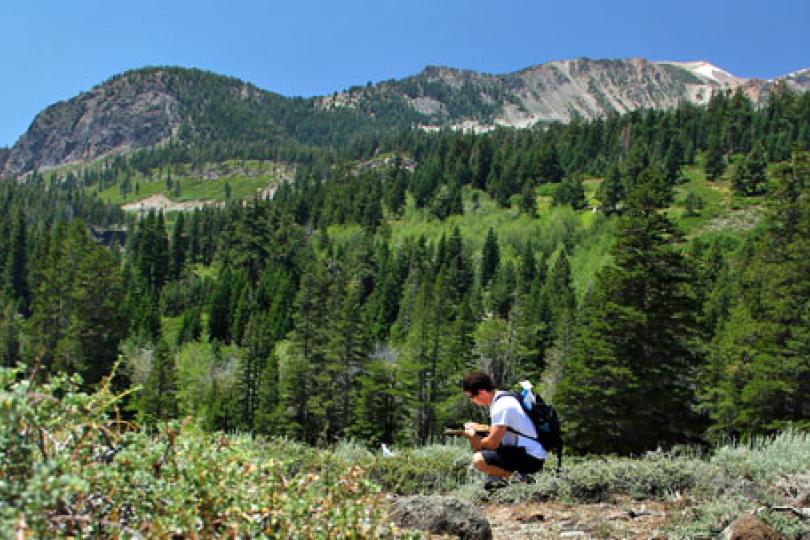Connecting the Public with Natural Processes
The burst of spring is breathtaking— the tree canopy fills in, birds reappear, and plants flower. But spring isn’t the only season that brings changes to the plants and animals around us. Summer, fall, and winter all have their own special impacts on plants and animals, signaling when it is time to reproduce, hibernate or even die.
Phenology is the science of observing how plants and animals change over days, weeks and months as the seasons change. It may be, in the words of 2012 Fellow Brian Haggerty, “the most ancient science” because it “isn’t just observing nature, it’s really connecting with nature on a full-time basis.” And the more we look as individuals, the more connected we are.
Traditional cultures had to plan their hunting and food and medicine gathering around the seasons and their observations of them, but in modern society we also depend on an understanding of phenology in economics, environmental science, agriculture and ecotourism, to name just a few fields.
Some modern applications of phenology include:
- Looking at the migration, returning times and spawning of salmon populations to maximize productivity while minimizing harm to fish populations;
- Improving agricultural yields by planting crops at the optimal times;
- Managing invasive species by figuring out when to best disrupt their periods of growth and reproduction; and,
- Understanding when and where pollen concentrations are highest to enable pharmaceutical companies to release drugs where they are most needed.
Phenological data, especially in an era of climate change when plant and animal patterns are changing rapidly, is critical to making these and other decisions that can have an impact on human health and safety.
The problem for scientists is that they simply do not have enough time or funding to collect and analyze all of the data needed to understand what is happening on a large scale as the climate changes. They need more coverage in urban, rural, and coastal areas. They need more eyes on the ground in the mountains and in arid lands.
What they need, Haggerty says, are citizen scientists.
One of the aims of Haggerty’s work with the California Phenology Project is to develop a template for the National Park Service to use nationally to get the public involved in collecting phenological data on a massive scale. These data already are helping scientists understand the impacts of climate change on local populations of plants and animals and plan for future disruptions caused by changing weather patterns.
While they are helping scientists at California’s National Parks implement phenology research programs, they are also training park interpreters and rangers how to engage the public with phenology and teach them how to collect observations of nature in their own back yards. These individual observations, on everything from flowering times to animal counts, can be entered into the National Phenology Network’s online Nature’s Notebook tool by individuals. The data can then be freely downloaded and used for scientific articles, education programs, and more.
This “train the trainer” approach has helped spread the word about phenology faster than working with individuals, which the project also does, says Haggerty. This rapid scaling is important because the database is crucial for tracking the impacts of climate change on a large scale and in more environments than would normally be possible by scientists. They’ve also expanded their programs into the UC Natural Reserve System, K-12 teacher workshops, and non-formal education settings like botanic gardens and environmental education organizations. There’s a rapidly growing need for integrative programs that are both scientifically rigorous and engaging for the public, he says, and the California Phenology Project tailors programs to each organization’s specific research and outreach needs.
Ultimately the goal is to inform the public, get them engaged in observing nature, and get them to help track the effects of climate change over years and even decades.
Collecting phenological data provides people with a chance to get outside and observe nature, but more importantly phenology connects people with the process of scientific discovery. It attracts many different types of people of all ages. They get a sense of community in local areas, observing nature in a coordinated way, and they also have the satisfaction of knowing that the data they are collecting is of critical importance at a national level.

